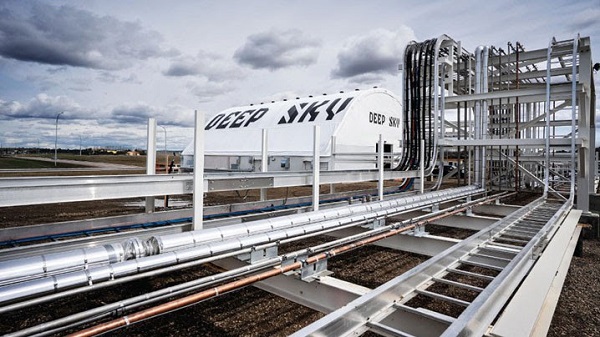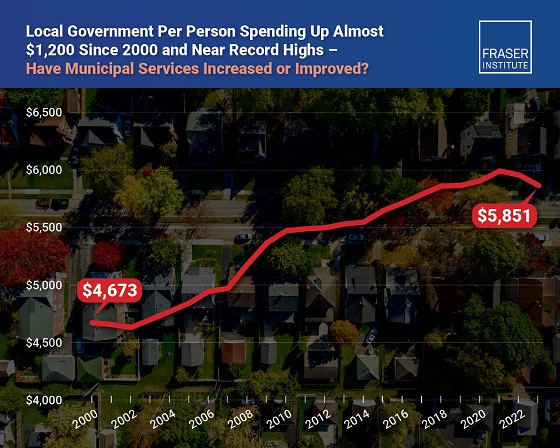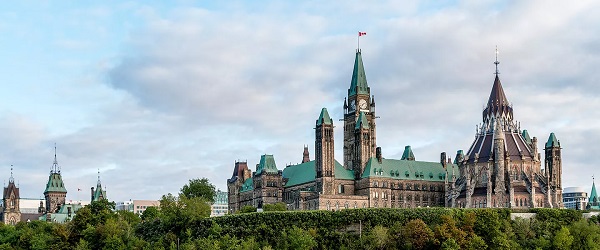Opinion
When it comes to facilities north of the river, am I beating a dead horse?

33 years ago the last school to be built north of the river opened it’s doors.
37 years ago the last swimming pool, (G.H.Dawe) opened it’s doors north of the river.
There has never been a high school built north of the river.
Odd since about one third of Red Deer’s population lives north of the river, sometimes going up to 40%.
Twice yesterday, it was suggested that I give up on lobbying for a high school north of the river.
It is tiresome for others as it is not going to happen. It has already been decided, no matter what public needs demand.
So when should a person give up trying to right a wrong, fight an injustice? Never.
Does it make people, bureaucrats and politicians uncomfortable and thus write this off as the ramblings of a grumpy old man? Apparently.
The city will have 6 high schools south of the river and 5 of those east of 30 Ave. There are fewer residents east of 30 Ave than north of the river but they will have 5 high schools to choose from with easy and quick access, while 1/3 of the students will have to commute across the city twice a day, even more if they wish to participate in extra-curricular activities.
I have been accused of being a one-trick pony, and to give it up.
There are 12 recreational complexes in Red Deer, indoor pools, rinks, curling and skating yet 11 of them are south of the river, with the 37 year old Dawe Center being the only one in the north. This time there are 4 of the 9 councillors and mayor supporting building the next aquatic centre north of the river.
That only took 37 years to get a possible, maybe in 4 more years we may possibly get another school north of the river.
Maybe I should not give up, just yet.
Maybe this old man, residing in the south end of town, (Sunnybrook), who will never attend a new school or swim in a new pool, defy his critics and continue to fight a continued decades old injustice?
Any objections?
Opinion
Blind to the Left: Canada’s Counter-Extremism Failure Leaves Neo-Marxist and Islamist Threats Unchecked

By Ian Bradbury
Incidents like the 2022 Coastal GasLink attack, the December 2023 Ottawa plot against Jewish events and the January 2024 Edmonton City Hall attack underscore the stakes, yet they fade from public discourse without rigorous analysis. This is not mere oversight—it is a systemic failure of Canada’s counter-radicalization and extremism frameworks and media, exposing the nation to risks from under-assessed threats.
In June 2025, a former British Columbia civil liberties leader—forced to resign in 2021 for rhetoric deemed too extreme even by the province’s NDP government—re-emerged to lead a protest outside the Canada Border Services Agency offices in Vancouver. Her earlier praise of Hamas attackers’ hang-glider tactics as “beautiful” and her call to “burn it all down” amid the 2021 church arsons across Canada raise a critical question: Is this the sign of a deeper ideological current gaining momentum beneath the surface?
Canada faces a mounting crisis of radicalization and extremism, yet its citizens remain largely uninformed or, worse, misinformed.
Despite tens of millions invested in counter-radicalization over the past decade, threats from extremist elements within the Pro-Palestinian movement, the “Hands Off Iran” protests, and left-wing extremism receive insufficient scrutiny.
The “Hands Off Iran” demonstrations on June 22, 2025, which rallied hundreds in support of the Iranian regime—planned before U.S. strikes on Iranian nuclear facilities and organized by many of the same protest groups active since October 7, 2023—highlight this neglect.
The absence of detailed reporting obscures their scope and significance. Incidents like the January 2024 Edmonton City Hall attack and the December 2023 Ottawa plot against Jewish events underscore the stakes, yet they fade from public discourse without rigorous analysis.
This is not mere oversight—it is a systemic failure of Canada’s counter-radicalization and extremism frameworks and media, exposing the nation to risks from under-assessed threats.
Under-assessed Threats in Plain Sight
Pro-Palestinian rallies in Vancouver, Toronto, Ottawa, and Montreal reveal this gap. Flags of Hamas and Hezbollah—designated terrorist groups in Canada—have been displayed openly, and chants of “Death to Canada”, “Death to America”, and “Death to Israel, Death to Jews” have been reported, yet government-funded organizations offer no in-depth analysis of the radical networks or rhetoric tied to these events.
The “Hands Off Iran” protests face the same silence. Where are the detailed reports dissecting these movements? Where are the network maps or guides to their flags, symbols, and rhetoric, as seen for far-right groups?
Similarly, Left-wing accelerationism, an neo-marxist ideology advocating violent societal collapse, has fueled incidents like the 2022 Coastal GasLink attack, the 2021 church arsons, and anti-colonial criminal acts, yet it is overshadowed and downplayed by coverage of far-right threats, such as militant “right-wing accelerationism”. Two cases illustrate the broad urgency: the Edmonton attack, involving gunfire and a Molotov cocktail, included a video supporting Palestine and condemning Israel’s actions in Gaza, but was downplayed as “salad-bar extremism.”
The Ottawa plot, inspired by Islamic extremism and the Israel-Palestine conflict, vanished from headlines with alarming speed. These incidents demand thorough investigation, not dismissal.
A Counter-Radicalization Industry Misaligned
Canada’s counter-radicalization efforts fail to address the full spectrum of threats. Organizations such as the Canadian Centre for the Prevention of Radicalization Leading to Violence and the Canadian Anti-Hate Network (an organization linked to the extremist decentralized Antifa movement) focus heavily on far-right extremism and limited Islamic threats (e.g., ISIS and Al-Qaeda), while sidelining left-wing extremism, accelerationism, anarchist extremism, and broader Islamic extremism.
Despite Canada’s 2024 designations of the IRGC and Samidoun as terrorist entities, these threats receive minimal attention compared to the detailed profiling of far-right networks in Canada. Detailed radicalization or extremist assessment reports on Edmonton or Ottawa? Virtually nonexistent. Further compounding the challenge, Canada’s reliance on foreign groups like the UK’s ICSR, ISD, Moonshot, or Meta’s GIFCT—partly funded by Canadian taxpayers—skews focus away from nuanced, Canada centered, counter-radicalization and extremism priorities.
Certain initiatives, such as Moonshot’s redirect program, which was found to have directed individuals vulnerable to right-wing radicalization to curated content from an anarchist and convicted human trafficker with ties to Russian organized crime, likely exacerbated rather than mitigated the risks it intended to reduce. This prompts a critical question: Why does Canada entrust so much of its counter-radicalization and extremism initiatives to external entities that are unaccountable to its citizens?
Media coverage only compounds the problem.
The Edmonton attack’s Palestine-linked video was buried under vague labeling, and the Ottawa plot faded without follow-up. Extremist symbols at rallies are treated as backdrop, unlike the 2022 convoy protests, which prompted detailed government-funded analyses of symbols, rhetoric, and networks, that were amplified by media.
Exacerbating the challenges, Public Safety Canada’s Listed Terrorist Entities page lists groups but lacks guides to their symbols, terms, or networks, leaving Canadians ill-equipped to identify threats. This is not journalism or governance—it is a failure to connect evident and observable dots.
CSIS and the RCMP have raised alarms about Iranian- and Palestinian-linked threats, in addition to Israeli Deputy Foreign Minister Sharren Haskel’s claim of hundreds of IRGC operatives active in Canada. The 2024 designations of the IRGC, linked to Hamas, Hezbollah, and the Houthis, and Samidoun, tied to Palestinian extremism, confirm these risks. CSIS has flagged Iranian-backed influence networks, and the RCMP thwarted plots like the Ottawa conspiracy.
Yet, these warnings rarely translate into robust public understanding, leaving Canadians vulnerable to acknowledged and observable threats.
A Path Forward: Immediate Accountability
The U.S. bombardment of Iranian nuclear sites has heightened these risks, with reports of Iranian sleeper cells in North America adding urgency. Canada must act swiftly to address all threats—left-wing, Islamic, and far-right—with equal rigor.
Detailed, unclassified reports on incidents like Edmonton and Ottawa, alongside network analyses of domestic protest and disruption movements, must become standard. Furthermore, Public Safety Canada should enhance its Listed Terrorist Entities page with guides to symbols, flags, rhetoric, and networks, drawing on allied nations’ open-source models for rapid implementation. Federal funding for counter-radicalization groups must mandate balanced, actionable reporting across all threats, verified through regular audits.
Canada’s skewed approach to extremism is a profound national security vulnerability. Left-wing extremism and accelerationism, pervasive Islamic extremism, and attacks on Jewish institutions fester unaddressed, while rallies including support for listed terrorist groups evade scrutiny.
The counter-radicalization sector, media, and government share responsibility for this dangerous oversight. As global tensions rise and domestic risks evolve, the cost of inaction grows steeper, leaving Canada vulnerable to the next strike. What message does Canada send by prioritizing some threats while overlooking others that are active and evident?
And what will the reckoning be when a skilled attacker, emboldened by this neglect, slips through the cracks?
The Bureau is a reader-supported publication.
To receive new posts and support my work, consider becoming a free or paid subscriber.
Invite your friends and earn rewards
MxM News
UPenn strips Lia Thomas of women’s swimming titles after Title IX investigation

Quick Hit:
UPenn will strip Lia Thomas of women’s swimming titles and apologize to impacted athletes in a Title IX settlement with the Department of Education, following a Trump-led investigation and funding freeze.
Key Details:
- The Department of Education announced Tuesday that UPenn will restore all Division I swimming records, titles, and recognitions to the biological women who earned them prior to Lia Thomas’s participation.
- The university will also issue personal apology letters to each affected female swimmer and release a public statement affirming that biological males will no longer be allowed to compete in women’s sports.
- The agreement follows a Trump administration order in March that froze $175 million in federal funding to UPenn pending a Title IX investigation. UPenn’s total federal funding exceeds $1 billion annually.
Diving Deeper:
On Tuesday, the Department of Education announced that the University of Pennsylvania had entered into a formal resolution agreement to address violations of Title IX, the federal law barring sex-based discrimination in education. The action stems from UPenn’s decision to allow Lia Thomas, a male athlete who identifies as transgender, to compete in women’s collegiate swimming events—an action the Trump administration deemed unlawful under Title IX protections.
According to the Department’s statement, UPenn will be required to restore “all individual UPenn Division I swimming records, titles, or similar recognitions” to the female athletes who were displaced by Thomas’s participation. The university must also send “a personalized letter of apology to each impacted female swimmer” and issue a broader public acknowledgment of its policy change: biological males will no longer be permitted to compete in women’s athletic programs.
The move marks the latest step in a months-long standoff between the Ivy League institution and the Trump administration. In March, the administration placed a hold on $175 million in federal funding allocated to UPenn, pending the outcome of an investigation into the school’s compliance with Title IX. That funding freeze was part of a broader executive order signed by President Donald Trump in February, which mandated that federal funds be withheld from schools allowing transgender athletes to compete against women.
Former UPenn swimmer Paula Scanlan, who was part of the team during Thomas’s controversial tenure, praised the outcome. “As a former UPenn swimmer who had to compete against and share a locker room with a male athlete, I am deeply grateful to the Trump Administration for refusing to back down on protecting women and girls and restoring our rightful accolades,” she said. “I am also pleased that my alma mater has finally agreed to take not only the lawful path, but the honorable one.”
Riley Gaines, a prominent women’s sports advocate and former NCAA swimmer, also applauded the agreement. “From day one, President Trump and Secretary McMahon vowed to protect women and girls, and today’s agreement with UPenn is a historic display of that promise being fulfilled,” Gaines said. “This Administration does not just pay lip service to women’s equality: it vigorously insists on that equality being upheld.”
The totality of UPenn’s federal funding—around $1 billion annually—could have been at risk had the university refused to comply. Instead, the school has agreed to the terms laid out by the Department of Education and will now be expected to implement new compliance policies to ensure continued eligibility for federal funds.
This resolution is one of the first high-profile enforcement actions under Trump’s revised Title IX policy, and it sends a clear signal: schools that violate protections for women’s sports face real consequences.
-

 Business2 days ago
Business2 days agoOttawa Funded the China Ferry Deal—Then Pretended to Oppose It
-

 COVID-192 days ago
COVID-192 days agoNew Peer-Reviewed Study Affirms COVID Vaccines Reduce Fertility
-

 MAiD2 days ago
MAiD2 days agoCanada’s euthanasia regime is not health care, but a death machine for the unwanted
-

 Alberta2 days ago
Alberta2 days agoThe permanent CO2 storage site at the end of the Alberta Carbon Trunk Line is just getting started
-

 Business1 day ago
Business1 day agoWorld Economic Forum Aims to Repair Relations with Schwab
-

 Alberta2 days ago
Alberta2 days agoAlberta’s government is investing $5 million to help launch the world’s first direct air capture centre at Innisfail
-

 Business2 days ago
Business2 days agoMunicipal government per-person spending in Canada hit near record levels
-

 Business1 day ago
Business1 day agoA new federal bureaucracy will not deliver the affordable housing Canadians need







